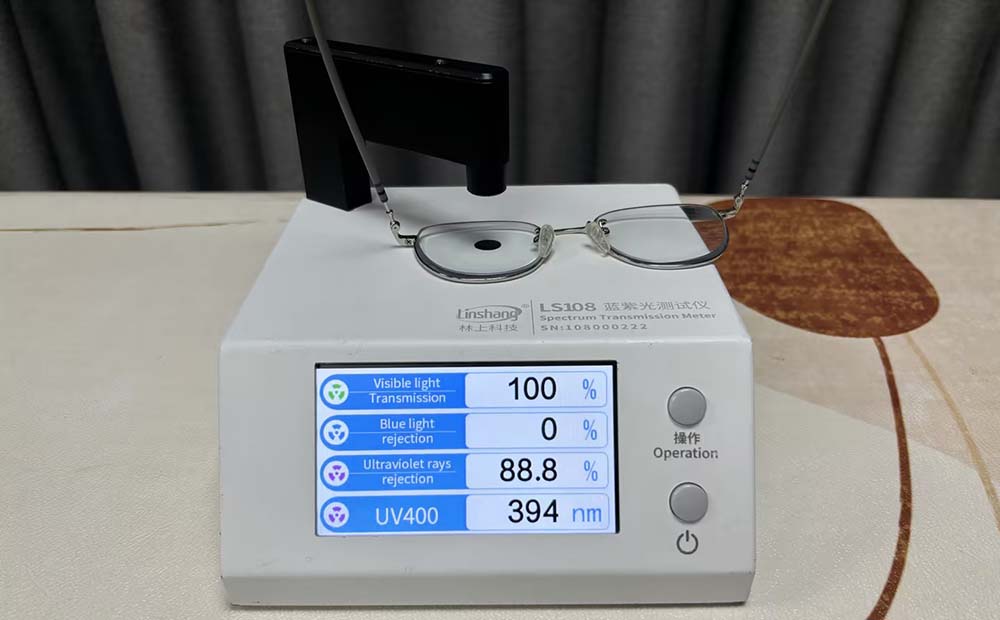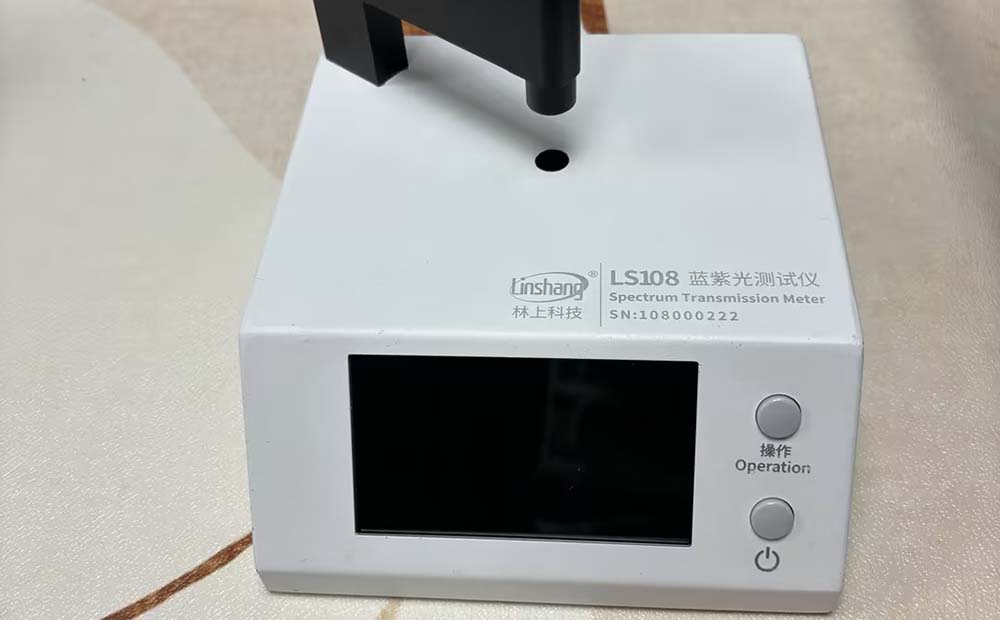How does the uv blue light tester determine the anti-blue light function of glasses?
Blue light not only exists in sunlight, but also in the display screens of digital electronic products such as computer monitors, iPads, and mobile phones. Long-term exposure of eyes to blue light can cause great harm. Modern people spend too much time in front of their mobile phones and computers every day, so many people wear anti-blue light glasses to prevent blue light from irritating their eyes. How to confirm whether glasses have anti-blue light function? You can use the Linshang spectrum transmission meter for testing.

What are the criteria for judging the anti-blue light function of lenses?
Blue light can have potential effects on our eye health. Prolonged exposure to blue light may cause eye fatigue, dryness, vision loss and other problems, and may even increase the risk of eye diseases. So what are the criteria for judging the anti-blue light function of lenses?
According to Chinese national standards"GB/T38120-2019 Technical requirements on application of light health and light safety of coating for protection against blue light", there are separate requirements for the blue light transmittance of anti-blue light lenses in different wavelength bands.For example, in the 415-445 nm band, the light transmittance should be less than or equal to 80%, and above 445 nm, it should be greater than 80%.
How to judge the anti-blue light function of glasses?
1. Check the lens package instructions to confirm the refractive index
Generally speaking, anti-blue light lenses currently focus on refractive indexes of 1.56 and 1.60. Short-wave blue light is light with relatively high energy between 400nm and 480nm. Blue light within this wavelength will increase the amount of toxins in the macular area of the eye, seriously threatening the health of the fundus.
2. Check the lens color
Real anti-blue light glasses, when viewed with the naked eye, the lenses show a special light yellow light, a high-definition light yellow color, strong absorption of blue light, and no side effects on vision. More importantly, real anti-blue light glasses need to be tested by an authoritative organization and have corresponding certificates.
3. Use spectrum transmission meter to make accurate judgments
Linshang LS108 spectrum transmission meter is a professional instrument used to test the barrier rate and transmittance of spectacle lenses. It can be professionally used to measure the transmittance and barrier rate of 395nm ultraviolet and 430nm blue light, as well as the transmittance and transmittance of visible light. UV400. With the help of the instrument, you can easily and accurately identify whether the glasses have anti-blue light function.
How does the spectrum transmission meter determine the anti-blue light function of glasses?
1.Measurement principle
Linshang LS108 uses 395nm purple light source, 430nm blue light source and visible light source to illuminate the transparent material to be measured. The sensor detects the incident light intensity of the three light sources and the light intensity after passing through the transparent material to be measured. The transmitted light intensity and the incident light The strongest ratio is the transmittance, expressed as a percentage, 1-transmittance = barrier rate.
2.Measurement method
First, connect the anti-blue light lens tester to the power supply and turn it on. Make sure that no test sample is placed in the test position when the instrument is turned on.
After the instrument passes self-calibration,place the lens on the tester and align it with the test aperture of the instrument.
After the instrument displays the reading, you can judge the anti-blue light effect of the glasses by checking the blue light blocking rate or transmittance.

The above is everything about using Linshang spectrum transmission meter to judge the anti-blue light effect of glasses. If you have any questions, please feel free to contact us!
- Why Do We Calibrate the Coating Thickness Gauge?
- Standard of Coating Thickness Detection and Paint Thickness Meter Application
- Paint Thickness Meter Test Furniture Hardware Accessories
- Linshang LS128 UV Radiometer Puck Operation Method
- Zinc Coating Thickness Measuring Instrument Principles
- Calibration and Maintenance of UV Power Puck